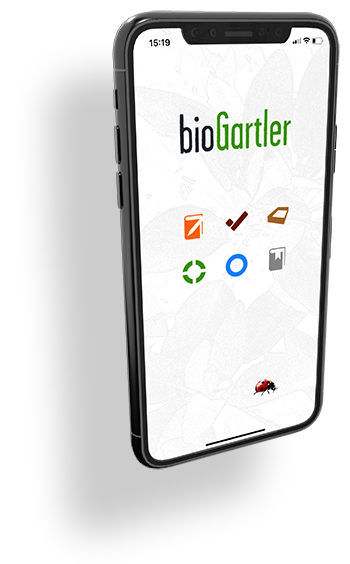Because you can freely name both genera and the corresponding varieties, there are many possibilities to manage your vegetables, flowers, trees, but also for example beds, beneficial insects, pests and other things in the garden, to collect information about them and to document everything in a diary.
You could think of "group" instead of genus, the varieties are then all that belongs to this group. But these do not necessarily have to be plants (see below).
Here are a few examples, first as you already know it:
| Genus | Tomatoes | |
| Varieties | Green Zebra, Moneymaker, Black Plum, Donatellina, San Marzano |
So far, so clear. But you also have different apple trees:
| Genus | Apple trees | |
| Varieties | Boskop, Elstar, Braeburn, Jonagold |
You have different fruit trees, 2 varieties of apple trees, otherwise only 1 variety each:
| Genus | Fruit trees | |
| Varieties | Apple Elstar, Apple Braeburn, Plum, Apricot, Cherry |
Here are a few suggestions on how it also works:
| Genus | Meadow | |
| Varieties | In front of the house, Behind the house |
| Genus | Roses | |
| Varieties | Gift from Jim, Yellow Clementine, Elfe® |
| Genus | Weeds | |
| Varieties | Dandelion, Chickweed, Commelina, Speedwell |
You do not know the variety of your plant?
You can also create and use a genus without an associated variety, for example if you don't know the variety at all. But keep in mind: you might get a second variety of this genus at some point, whose name you know and want to enter. Then you would have 1 genus with 2 varieties, one of which has no name. So for variety better "unknown", "n.a." (for "no idea" or "no information"), the year since when you have it or something similar. Or just add all entries for this variety later ;)
If you want to buy seeds (or young plants) of a variety a second time and document them separately, just add the year to the variety. For example, if you already had the strawberries of the variety "Polka", buy new plants and name the variety "Polka 2020".
But a genus and its varieties do not have to be plants ...
| Genus | Beneficial insects | |
| Varieties | Bees, Ladybirds, Lacewing, Earthworms |
| Genus | Parasites | |
| Varieties | Snails, Lice, Potato Beetles, Spider Mites |
| Genus | Pond | |
| Varieties | General (concerning the pond), Grasses, Water, Fish species 1, Fish species 2 |
You can also document your beds ...
When did you plant the bed? When did you fertilise or mulch? When did you sow which green manure? You can simply write all this down in your diary.
| Genus | Beds | |
| Varieties | Raised bed 1, Foil tunnel, Greenhouse, Shrub bed 1, In front of the house, ... |
So with this app you can easily collect information on any topic, find it again easily at any time and document everything in your diary! As you can see, there are countless ways to use the app.
Translated from German with DeepL.com (free version)








Comments powered by CComment